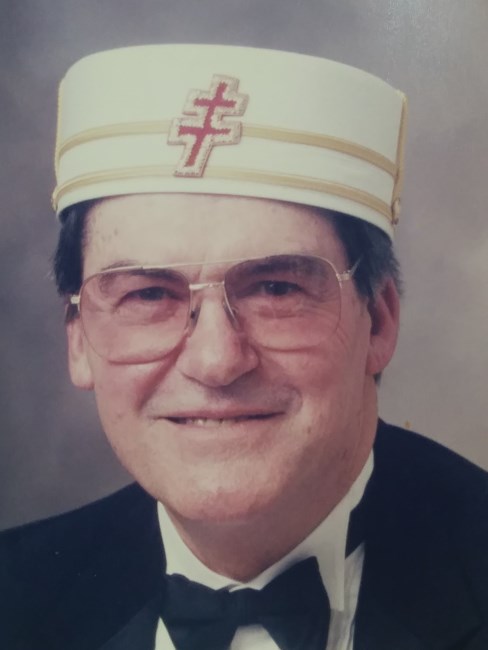
OBITUARIO
Richard Neal Schowengerdt
20 septiembre, 1930 – 24 diciembre, 2021

Richard was born September 20, 1930 in Springfield, Missouri to John Herman Schowengerdt and Muriel Juanita Schowengerdt.
He voluntarily entered the U.S. Navy in 1950 at the beginning of the Korean War. While stationed in Sasebo, Japan, he met his future wife, Emiko Murai. After an honorable discharge from the Navy in 1954, he attended school under the G.I. Bill at Tokyo’s Sophia University (Jochi Diagaku) where he entered a pre-engineering program. Richard continued to live in Tokyo with his wife, Emiko, and their two young daughters, Margaret Midori and Maria Tomiko, until 1957 when the family moved to the U.S. where Richard completed his engineering studies at St. Louis University. His son, Michael, was born in 1964, the same year Richard was promoted to Guided Missile Branch Head at the U.S. Naval Station in Seal Beach, California, where Richard supervised 25 engineers and technicians in two operating divisions (Radio Frequency & Microwave and Infrared & Optical).
Richard’s career as a professional engineer spanned over six decades. Beginning in the early 1960s, Richard was responsible for a number of innovations in the field of electromagnetics while working under the auspices of the U.S. military at installations such as the Navy Metrology Engineering Center (MEC), the Naval Sea Systems Command Technical Representative Office (NAVSEA TECHREP AEGIS), and with the Naval Reserve at the Miramar Naval Air Station and the Naval Air Station, Pt. Mugu, among several other installations. At MEC he was instrumental in developing the first digital voltmeters, as well as directing nuclear magnetic and Josephson’s Effect research with the National Bureau of Standards, now designated as the National Institute of Standards and Technology (NIST). When he worked for the NAVSEA TECHREP, he pioneered a concept for closed-loop testing of guided missiles that reduced the need for excessive missile firings on a test range. Beginning in 1988 he was responsible for engineering surveillance of the Northrop Grumman workshares on the F/A-18 E&F, EA-18G, B-2 Bomber, and various Unmanned Aircraft at both El Segundo and Palmdale. Prior to his retirement in the fall of 2014, he was a key member of the Defense Contract Management Agency (DCMA) Palmdale, El Segundo Operations, where he was assigned to the Advanced Extremely High Frequency (AEHF) Program Support Team in the Redondo Beach, Space Park Office, and responsible for engineering surveillance of the AEHF satellite program. His professional memberships included the Association of Old Crows, the World Premier Electronic Warfare society, and the National Defense Industrial Association, America’s leading Defense Industry association promoting national security.
In 1987, Richard began his breakthrough private experiments with electro-optical camouflage, but it wasn’t until 1993 that he launched Project Chameleo, a revolutionary attempt to develop fully operational electro-optical camouflage to be used by United States soldiers in the battlefield. He finally secured Patent No. 5,307,162 entitled “Cloaking Using Optoelectronically Controlled Camouflage” on April 26, 1994. Later he teamed up with an associate in Hemet, California, the physicist Dr. Lev Berger, to perform tests and simulations involving Project Chameleo technology, culminating in the presentation of a paper, “Physical Aspects of Electro-Optical Camouflage,” at the American Physical Society Centennial in Atlanta on March 23, 1999. In February 2005 he presented a paper entitled “Innovations in Electro-Optical Camouflage—PROJECT CHAMELEO” at a Military Sensing Symposium at SPAWAR, Charleston, South Carolina. These presentations demonstrated the various practical applications for Richard’s physical invisibility concepts in such vital areas as the military, law enforcement, industrial security, industrial and workforce environmental enhancement, and facility emissions control.
The ripple effects of his pioneering experiments with optical camouflage continue to influence various aspects of the American defense industry to this day, a little known fact documented extensively in the nonfiction book, Chameleo (OR Books, 2015), and in publications as diverse as the Defense Review (the March 3, 2005 edition) and Fortean Times (the September 2013 edition).
According to Richard, his active participation and unflagging interest in Freemasonry and Rosicrucianism has been entwined with his scientific curiosity for over sixty years. He became a Freemason and a Rosicrucian on the island of Guam in 1953 while serving in the U.S. Navy, a Scottish Rite Freemason in 1969, and a York Rite Mason in 2009. He was a proud 33rd degree Freemason and served for four years as Director of the Work at the Scottish Rite Temple in Long Beach, California. He wrote articles about Masonic subjects for The New Age, The Scottish Rite Reporter, and other fraternal publications. In his later years, he frequently delivered lectures to various Southern California Masonic lodges about esoteric topics such as “Relationship of the Kabbala to the DoD Acquisition Cycle: Ancient Esoteric Philosophy as the Root of Modern Creative Systems.” In an April, 2015 interview published in Nexus Magazine Vol. 23, No. 4 (June/July 2016), Richard discussed how Freemasonry, Rosicrucianism, and other metaphysical strains of thought profoundly impacted his many scientific endeavors from the early 1950s onward.
He is survived by his wife of 67 years, Emiko, and his daughter, Maria.
A Masonic Service will take place Sunday, February 6, 2022 at 2pm at Hoffmeister Colonial Mortuary, 6464 Chippewa Street, Saint Louis MO 63109. Private interment in Bellflower, Missouri on Monday, February 7.
Please leave a fond memory of Richard for his family to cherish at the "Add a Memory" link below.
Muestre su apoyo
Comparta Un Recuerdo
Comparta
Un Obituario
Obtenga actualizaciones
Servicios Previos
Masonic Service - Sunday
COMPARTA UN OBITUARIO
- RECIBE ACTUALIZACIONES
v.1.8.18